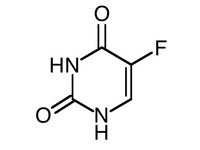A Randomized Trial of Topical 5% 5-Fluorouracil (Efudix[R], Cream) in the Treatment of Actinic Keratoses Comparing Daily with Weekly Treatment
Jury CS, et al. British Journal of Dermatology. 2005;153:808-810.
Summary
The authors present a randomized trial to assess the efficacy of 5% 5-fluorouracil in the treatment of actinic keratoses using 2 different treatment regimens. Twenty patients with actinic keratoses of the face and/or scalp were enrolled. None had treatment of actinic keratoses in the 12 months prior to study enrollment. Patients with hypertrophic actinic keratoses were excluded from the study. Enrolled patients were randomized to 1 of 2 groups. Group 1 applied 5-fluorouracil twice daily for 3 weeks. Group 2 used 5-fluorouracil twice daily for 1 day each week out of a total of 12 weeks. Patients were assessed at weeks 3, 12, 24, and 52. A lesion count was performed at each assessment. In addition, lesions were mapped each visit and photographs were taken. The primary outcome measure was the median lesion count. Patients were also asked about what kind of effect the treatment had on their skin and if the treatment was uncomfortable. At the end of 52 weeks, data was collected from 13 patients, as one patient had died secondary to an unrelated disease and 6 were lost to follow-up. At baseline, the median lesion count in patients of both groups was 17.5. After 12 weeks, patients in group 1 had a lesion count of 0 and no change was observed in the lesion count of the remainder of follow-up. Patients in group 2 had a median lesion count of 6 at 12 weeks, 5.5 at 24 weeks, and 3 at 52 weeks. There was a statistically significant difference in median lesion counts between the 2 groups at each assessment. Those patients who had no actinic keratoses at week 12 had a statistically significant increase in inflammation score compared with those who had remaining lesions. Two dermatologists evaluated the clinical photographs taken and scored them for inflammation and efficacy. There was no statistically significant difference in the scores between the 2 groups at each assessment.
Comment
The authors present a randomized trial to ascertain if treatment with 5-fluorouracil twice daily for 1 day per week for a total of 12 weeks is of comparable efficacy in the treatment of actinic keratoses to the dosing regimen recommended by the drug's manufacturers. This study was conducted in response to a prior trial of pulse-dosed 5-fluorouracil in which efficacy was demonstrated. (1) However, this study showed a lack of efficacy in the clearance of actinic keratoses using pulsed 5-fluorouracil at all time points. The importance of inducing inflammation in order to clear actinic keratoses was shown, noting all patients who had cleared at 12 weeks had statistically significant increases in inflammation scores. In addition, all patients in group 1 who responded to the question "Would you use this treatment again?" said that they would. This study was well conducted, however, no mention of blinding is noted in the article. It is unclear if, aside from those dermatologists reviewing only the clinical photographs, other investigators were blinded as to treatment regimen. If there was no blinding of investigators, this would not seem to detract from the results given lesion counts were the primary outcome of the study. In all, twice daily dosing of 5-fluorouracil for a total of 3 weeks is more effective in the clearance of actinic keratoses when compared to this pulse-dosed regimen.
Reference
1. Pearlman DL. Weekly pulse dosing: effective and comfortable 5-fluorouracil treatment of multiple facial actinic keratoses. J Am Acad Dermatol. 1991;25:665-667.
Washington Whispers provides a summary and critical evaluation of the latest drug trials, studies, and reactions available to the medical community, as collated from a wealth of industry sources.
COPYRIGHT 2006 Journal of Drugs in Dermatology, Inc.
COPYRIGHT 2006 Gale Group



